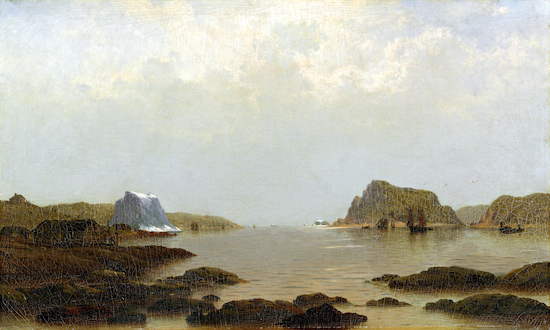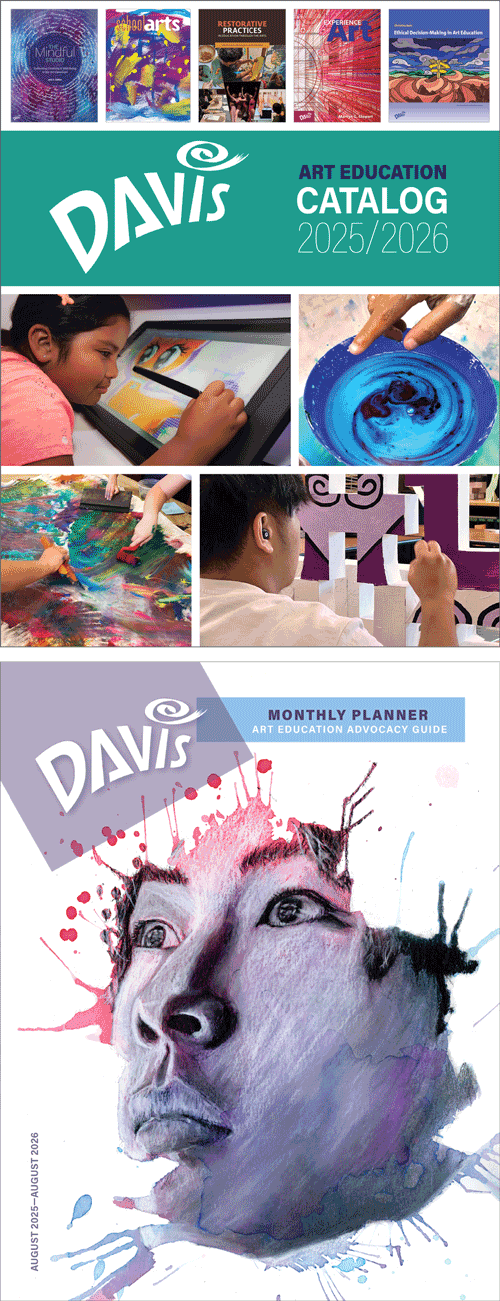Artist Birthday: William Bradford
William Bradford was part of the first generation of a home-grown landscape painting school, which evolved out of the Hudson River School development in the Northeast. His specialty was maritime scenes, much in the tradition of Dutch Baroque marine views.
Artist birthday for 30 April: William Bradford (1823–1892, United States)
William Bradford was part of the first generation of a truly American school of painting.
 |
| William Bradford, View in Sandwich Bay (Coast of Labrador), ca. 1861–1867. Oil on canvas, 45.7 x 76.2 cm. © 2025 Philadelphia Museum of Art. (PMA-3223) |
Bradford's combination of photography and painting are archetypal of the 1800s preoccupation of artists with combining science, romance, and natural beauty. Like many of the Hudson River School artists, his paintings reveal a keen perception of unique light and atmosphere, something that characterized the sub-style of the Hudson River School called Luminism. The View of Sandwich Bay in Labrador is the ideal combination of Romantic Realism, polar exploration, and a sensitive portrayal of the effects of natural light on the coastal sea. Like the Luminist works of Church, Bradford devotes exacting detail to foreground forms, such as the rocky shore, while middle ground and background forms gradually diminish in clarity and are purely painterly.
During the 1700s in America, there was virtually no tradition of landscape painting. Landscape was relegated to overmantle decoration (painted woodland scenes above a fireplace, usually part of the wall), and as perfunctory, decorative backgrounds in portraits. During the Federalist Period (1788–1800)—so-called after the dominant Federalist political party of the period—American began to commission paintings of their environments, and every activities in their new country. Americans were also becoming fascinated with the unique character of the American wilderness.
American landscape painting began to evolve in the late 1790s and first 25 years of the 1800s. The way was paved by British artists who brought landscape views that showed a love for nature, and the “picturesque.” It was a lyrical, romantic style – although emphasizing truth of observation – which transformed the Classicist landscapes of French Baroque painter Claude Lorrain (1600–1682).
William Bradford, born in Fairhaven, MA, was interested in painting from an early age. Although his father disapproved, and he for years worked as a clothier, Bradford spent his free time honing his artistic skills by copying British drawings in precise, thin contour line drawings of ships in New Bedford harbor. In 1853 he was finally able to devote himself to painting, establishing a studio in Fairhaven in 1855.
Bradford developed a style greatly influenced by the prevalent Romantic/Realist style of the Hudson River School. He also was influenced by Dutch Baroque maritime painting which he learned from the Dutch artist Albert van Beest (1820–1860), who shared his studio in Fairhaven. Bradford's earliest commissions were for ship portraits of merchant and whaling vessels in New Bedford harbor. Van Beest got Bradford to loosen his precision realism with more fluid, suggestive brush work.
Beyond New England, Bradford became interested in painting scenes of the Arctic region. He was influenced by reports accompanied by sketches of the numerous Arctic expeditions of the 1840s and 1850s, and also by the painting of Frederic Church (1826–1900). Church visited the polar seas in 1860/1861 and painted many scenes of icebergs. Between 1854 and 1857 Bradford made trips to the coast of Labrador, and between 1861 and 1867 organized expeditions on the coasts of Nova Scotia and Labrador.
Bradford published a book accompanied by 130 photographs of his Arctic journey in 1873 in London. After 1874 he limited his travel to the United States. From a studio in New York he produced paintings of his Arctic trips based on his photographs and sketches. His painting style reverted to his earlier precise realism which was more linear, less atmospheric, and featured a much-reduced palette.

Comments